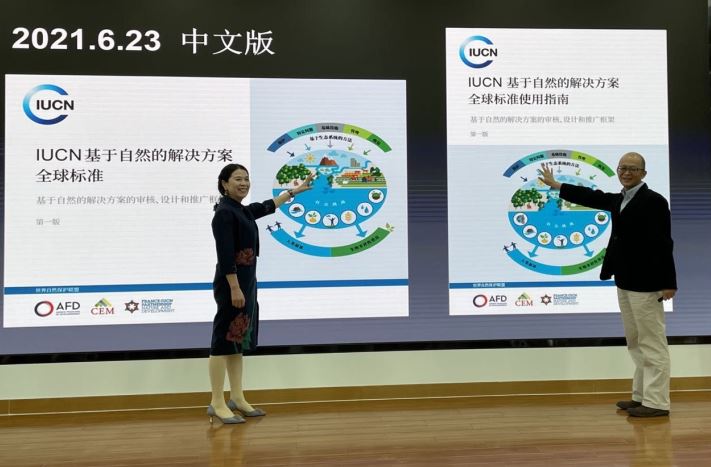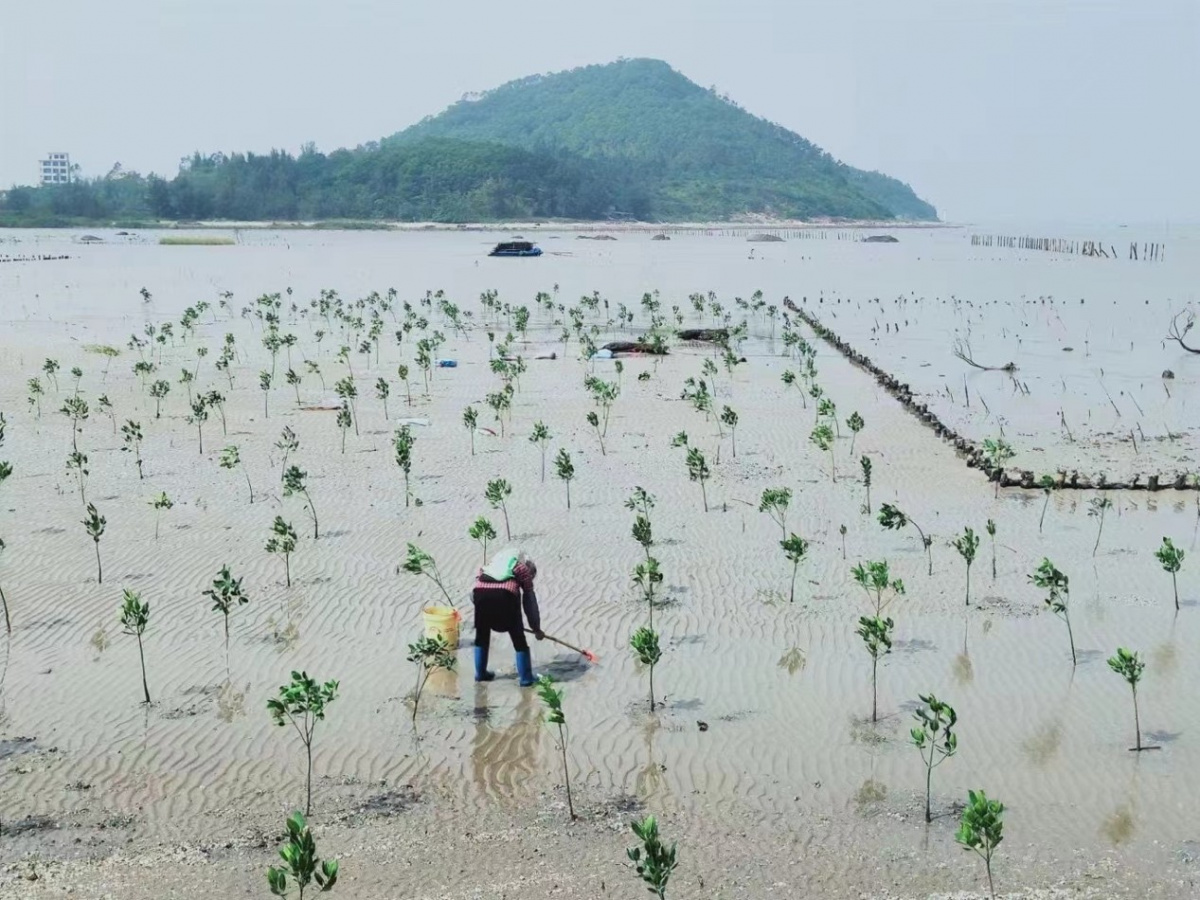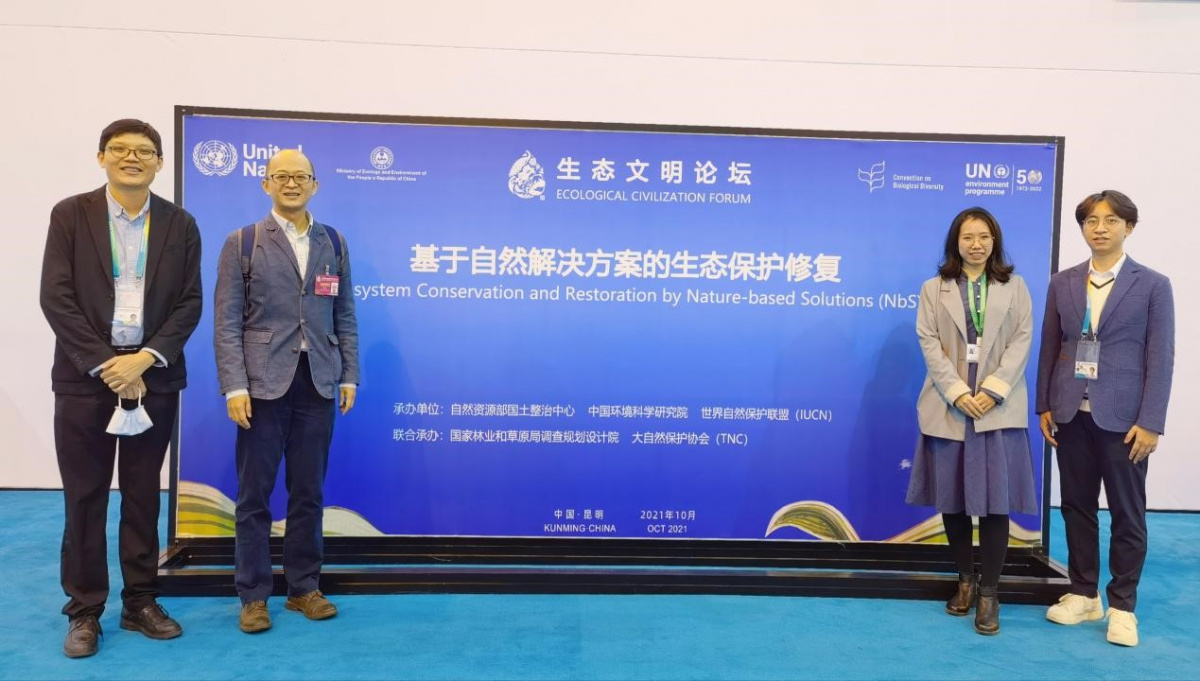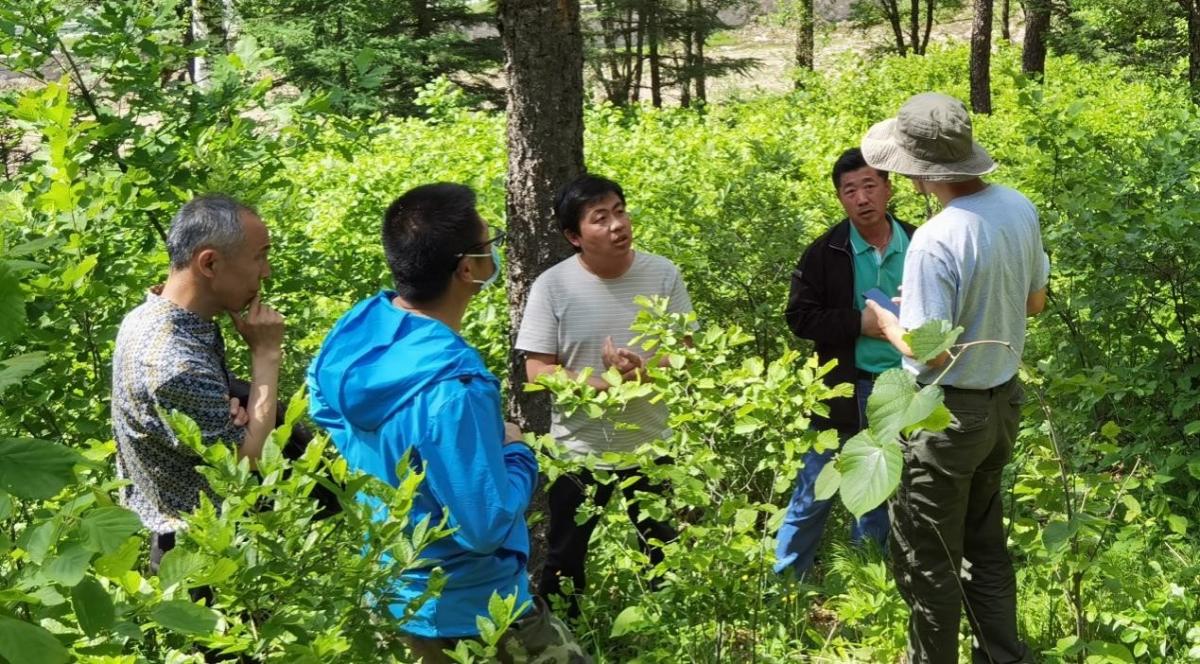IUCN Global Standard for NbS™ and guidance advanced in China
Beijing, China, 23 June 2021 (IUCN) – China’s Ministry of Natural Resources (MNR), together with IUCN, today officially launched the Chinese version of the IUCN Global Standard for NbS and guidance, along with 10 new case studies, to advance Nature-based Solutions (NbS) actions throughout the country.

Photo: IUCN China
The publication of the global standard and guidance in Chinese is a key milestone in the strategic collaboration between IUCN and MNR, as outlined in their 2020 Memorandum of Understanding (MOU), which agrees to promote the uptake of NbS in China. Under the guidance of IUCN Global Standard for NbSTM, the government and IUCN unveiled 10 new NbS-related case studies on conservation and restoration good practice in China. The case studies will contribute to a growing body of NbS knowledge in China and globally.
Mr. Wang Hong, Vice Minister of MNR, said during his opening remarks: “Nature-based Solutions are highly consistent with the concept of Ecological Civilization. The release of the Chinese version of the IUCN Global Standard for NbSTM is a great advancement to promote NbS in China. It will support our efforts in ecological protection and restoration; help achieve carbon peak and carbon neutral goals; and, ultimately, enhance China’s governance on ecology and natural resources.
“China is committed to building a community with a shared future for mankind,” added Mr Wang. “We are pleased to work with IUCN to further develop the theory, standard and practice of NbS, and to contribute to the sustainable development of the world“.
Mr. Stewart Maginnis, Global Director of IUCN’s Nature-based Solutions Group, said: “It is exciting to see that MNR has already adopted the principles of IUCN’s NbS standard within its national programmes, and is taking a holistic approach to protect and restore its mountains, rivers, forests, farmlands, lakes, and grasslands. As the 10 NbS case studies indicate, China’s experience provides both leadership and inspiration to the global NbS community. This includes plans to jointly develop with IUCN the first Regional Hub for NbS in Asia.”
Mr. Zhang Yan, Country Coordinator, IUCN China, said: “We will further support Chinese authorities, Members and partners in their endeavours to achieve carbon neutrality, protect and restore important ecosystems in an integrated manner, and conserve the Yangtze and Yellow rivers, as well as other important landscapes and seascapes. IUCN is ready to provide support to localise, disseminate and mainstream NbS and the NbS global standard in China”.
Mr. Zhang Zhanhai, the Chief Engineer of MNR, concluded: ”We will strengthen the cooperation with IUCN to advance the IUCN Global Standard for NbSTM in China, and use it to support key nature conservation and restoration programmes. We will also work together to further consolidate China’s NbS experiences and ensure its many examples of best practice are shared globally.”
During the event, experts from Chinese Academy of Sciences and Tsinghua University as well as representatives from MNR, National Forestry and Grassland Administration, local government, UN agencies and civil society organisations in China, were also invited by MNR and IUCN to share their suggestions and inputs on how to mainstream NbS and the IUCN Global Standard for NbSTM in China, while supporting the achievement of China’s carbon neutrality goal and its 14th Five-Year Plan.
More than 90 people from national and local government authorities, research institutions, international organisations, aid agencies, international and national NGOs as well as media participated in the launch event.
Note to Editors:
- In 2016, IUCN defined NbS as “actions to protect, sustainably manage and restore natural or modified ecosystems that address societal challenges effectively and adaptively, simultaneously providing human well-being and biodiversity benefits.”
- Following a two-year global consultation, the IUCN Global Standard for NbS™ was launched in July 2020. It provides clear parameters for defining NbS and a common framework to help benchmark progress. Such a framework is essential to increase the scale and impact of the NbS approach as well as to prevent unanticipated negative outcomes or misuse.
About IUCN and China
IUCN first visited China in 1979, when it initiated discussions with the Chinese government about the potential for future collaboration. In the 1980s, IUCN launched a number of preliminary activities in China, bringing its global and regional strengths into play to assist China to cooperate with the global community on key environmental issues, including panda conservation. In 1996, the Ministry of Foreign Affairs of China officially joined IUCN as a State Member; in December 2019, this responsibility was assumed by the Ministry of Natural Resources. As of December 2020, there are 52 IUCN Members and over 500 Commission members in China.
For more information, please contact:
Yiyun Sun, Media and Programme Officer, IUCN China, email: yiyun.sun@iucn.org
Or visit the IUCN website: https://www.iucn.org/theme/nature-based-solutions



